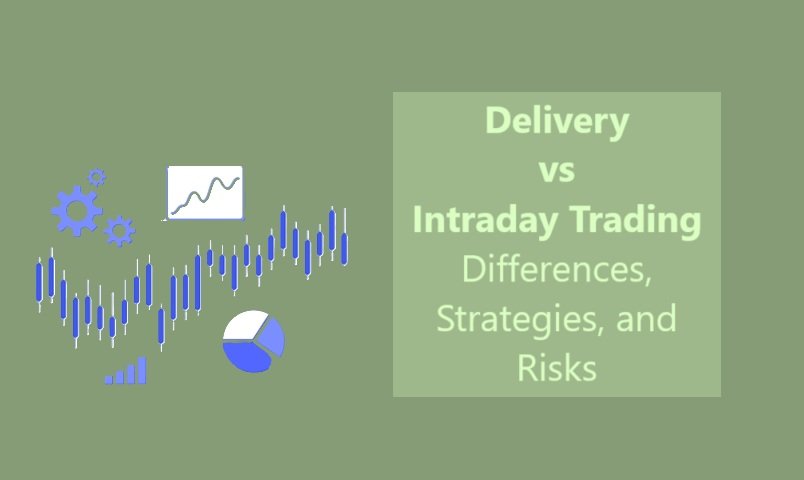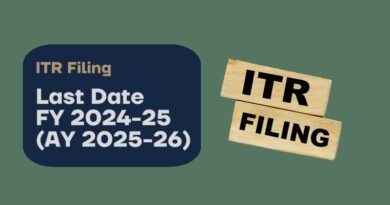
Delivery vs Intraday Trading: Differences, Strategies, and Risks
Introduction:
In the world of stock trading, two of the most commonly discussed types of trading are Delivery Trading and Intraday Trading. While both methods involve buying and selling stocks or other financial instruments, they differ significantly in terms of timeframes, strategies, and objectives. Understanding these differences is crucial for any trader or investor who is looking to optimize their trading strategy based on their financial goals, risk appetite, and time commitment.
In this article, we will explore the concepts of delivery trading and intraday trading, discuss their pros and cons, outline the strategies for each, and provide insights on which might suit different types of traders.
What is Delivery Trading?
Delivery Trading refers to a type of trade where the buyer purchases securities (stocks, bonds, commodities, etc.) with the intent to hold them for a longer period—ranging from a few days to several months or even years. In delivery trading, the buyer takes actual ownership of the stocks, which are transferred to their demat account. This type of trading is typically used by investors who have a long-term investment strategy.
How Delivery Trading Works:
- Purchase of Stock: When a trader buys shares in delivery trading, the stocks are purchased for the investor’s personal account. The shares are transferred to their demat account and can be held indefinitely until they decide to sell.
- Settlement: The settlement period for delivery trading usually follows a T+2 (Trade + 2 days) cycle, which means that once a trade is executed, the shares are credited to the investor’s account within two days.
- Holding Period: Delivery trading is more focused on capital appreciation over a long period. The idea is to buy stocks of companies with strong growth potential and hold them for a longer time to benefit from price increases, dividends, or other shareholder benefits.
Characteristics of Delivery Trading:
- Long-Term Perspective: Investors often buy stocks with the intention of holding them for several weeks, months, or years.
- Ownership of Stocks: The investor owns the stocks and has the right to vote in shareholder meetings and receive dividends.
- Minimal Leverage: Delivery trading usually does not involve high leverage, as traders pay the full price of the stocks upfront.
- Lower Transaction Frequency: Trades are infrequent and mostly executed based on fundamental analysis of the company or sector.
Advantages of Delivery Trading:
- Ownership of Stocks: You gain ownership of the stocks you buy, giving you the right to dividends, voting rights, and other shareholder benefits.
- Long-Term Capital Gains: If the market goes up, your stock values can appreciate significantly over time. Capital gains from long-term investments are often taxed at lower rates.
- Less Stressful: Delivery trading allows you to take a longer-term view and reduces the pressure of daily market fluctuations.
- Dividends: Long-term investors in delivery trading can receive regular dividends if the companies they invest in are profitable.
Disadvantages of Delivery Trading:
- Higher Capital Commitment: Since you’re purchasing stocks with the intention to hold them, delivery trading typically requires more capital upfront.
- Slower Returns: Unlike intraday trading, delivery trading generally takes time to realize significant returns, making it a less attractive option for those seeking short-term profits.
- Market Risk: If the market moves against your position, it can take a long time for the stock to recover its value, potentially affecting the overall performance of your portfolio.
What is Intraday Trading?
Intraday Trading, also known as Day Trading, is a type of trading where the positions are bought and sold within the same trading day, with no holdings carried overnight. The primary objective of intraday trading is to capitalize on short-term price movements, which require active monitoring of the market and quick decision-making.
How Intraday Trading Works:
- Buying and Selling Within the Day: In intraday trading, a trader buys and sells stocks or financial instruments on the same day, sometimes within minutes or hours, based on price movements.
- No Ownership: Since intraday traders close their positions before the market ends, there is no transfer of ownership. The traders are merely speculating on price movements rather than investing in the companies themselves.
- Leverage: Intraday traders can use margin trading (leverage) to take larger positions in stocks with a smaller initial investment. Leverage can amplify both gains and losses, making it a riskier strategy.
Characteristics of Intraday Trading:
- Short-Term Focus: Intraday traders focus on making profits from short-term price fluctuations, often executing multiple trades throughout the day.
- No Holding of Stocks: Since positions are closed within the same day, traders do not take ownership of the stocks and are merely speculating on price movements.
- High Frequency of Transactions: Intraday trading often involves numerous transactions within a day, requiring continuous market observation.
- Leverage: Traders can use leverage to increase their exposure to a particular stock, enhancing both potential profits and risks.
Advantages of Intraday Trading:
- Quick Profits: With rapid buying and selling, traders can make quick profits from even small price movements in a single day.
- No Overnight Risk: Intraday traders avoid overnight risk since all positions are closed by the end of the trading day.
- Leverage for Higher Returns: By using leverage, traders can control a larger position than their actual capital, increasing their profit potential.
- Flexibility: Intraday trading offers flexibility in terms of time commitment, as traders can choose to work full-time or part-time depending on their schedule.
Disadvantages of Intraday Trading:
- High Risk: The quick pace of intraday trading and use of leverage can lead to significant losses if trades do not go as expected.
- Stressful: Intraday trading requires constant market monitoring, fast decision-making, and the ability to manage emotions under pressure.
- Transaction Costs: Frequent trading results in higher brokerage fees and taxes, which can eat into the potential profits.
- Requires Expertise: Success in intraday trading requires significant knowledge, experience, and technical analysis skills to read charts and identify patterns.
Key Differences Between Delivery and Intraday Trading
| Feature | Delivery Trading | Intraday Trading |
|---|---|---|
| Holding Period | Long-term (days, months, years) | Short-term (within a single trading day) |
| Ownership | Investor owns the stocks | No ownership of stocks; positions are closed same day |
| Risk | Lower risk (long-term perspective) | Higher risk (due to short-term fluctuations and leverage) |
| Leverage | No leverage or low leverage | High leverage (margin trading available) |
| Capital Requirement | Higher capital commitment | Lower capital required due to margin trading |
| Return Timeframe | Slower, dependent on market growth | Quick returns (within the day) |
| Transaction Frequency | Infrequent | Frequent (multiple trades per day) |
| Profit Potential | Capital appreciation over time, dividends | Profit from small price movements, potentially frequent gains |
| Tax Implications | Long-term capital gains tax | Short-term capital gains tax (usually higher rates) |
Which Trading Style is Right for You?
The choice between delivery and intraday trading depends on several factors:
- Time Commitment: If you have a busy schedule and are not able to dedicate much time to monitor the market throughout the day, delivery trading may be a better option. On the other hand, if you can actively monitor market movements and make quick decisions, intraday trading could suit you.
- Risk Tolerance: Delivery trading is generally less risky because it is focused on long-term investment, while intraday trading carries higher risk due to market volatility and leverage.
- Capital Availability: Delivery trading typically requires a larger capital commitment upfront, while intraday trading allows you to control larger positions with a smaller initial investment due to leverage.
- Investment Goal: If your goal is to accumulate wealth over the long term and take advantage of company growth, delivery trading is more appropriate. If you’re looking to generate quick profits from market volatility, intraday trading may be better suited to your goals.
Conclusion
Both delivery trading and intraday trading have their unique advantages, risks, and rewards. The key to success lies in aligning your trading style with your financial goals, risk tolerance, and the amount of time you’re willing to dedicate to the market. While delivery trading offers long-term capital gains and ownership benefits, intraday trading offers the potential for quick returns, albeit with greater risk and stress.
Ultimately, it’s essential to continuously educate yourself, keep abreast of market developments, and develop a sound strategy to ensure your success in whichever trading style you choose.
This comprehensive guide should help you make an informed decision on whether delivery or intraday trading aligns with your investment goals and personal preferences.
Read this: Options vs. Stocks – Which One is Better?






